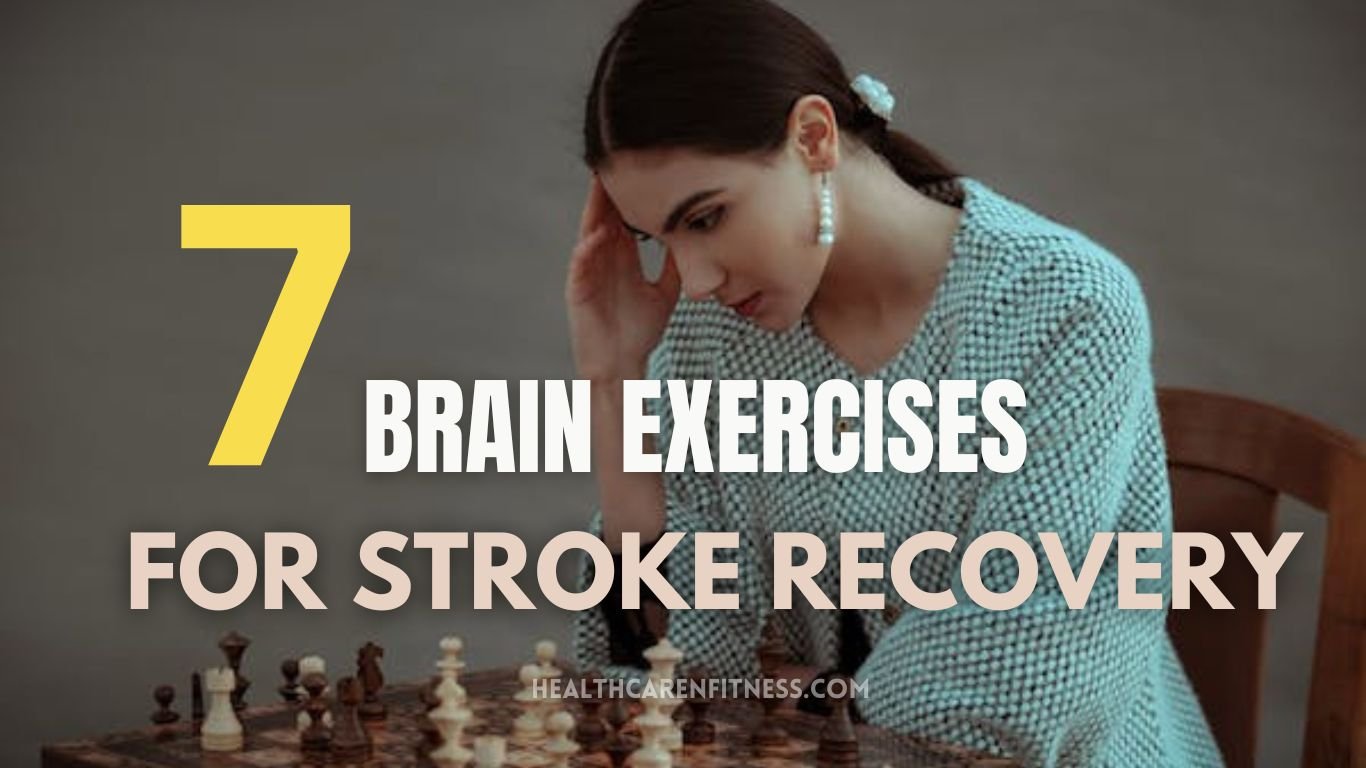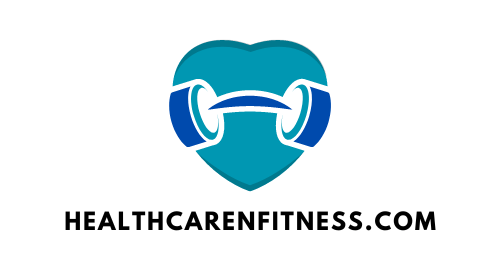
Introduction
When someone has a stroke, there are many things they need to do for Stroke Recovery. The most important thing is to work on their thinking skills. It helps them to improve their life after stroke. Special brain exercises can help them make new connections in their brains and use their brains in different ways. This article will give you Top 7 Brain Exercises for Stroke Recovery. These exercises are for someone who has had a stroke or is caring for someone who has had a stroke. They can help make the brain stronger and healthier after a stroke.
Stroke recovery exercises are one of the things that can help people get better after a stroke. Other things like physical therapy or occupational therapy can make the body stronger and more flexible, but brain exercises can improve the brain’s functions.
Types of Brain Exercises for Stroke Recovery
1. Cognitive Training
Cognitive training is one way to keep your brain healthy and sharp. These are one of the best brain exercises for stroke recovery This includes doing regular activities that challenge your brain, such as puzzles, exercise or computer games. Cognitive training can be helpful for people of all ages, but it is especially beneficial for people who want to recover from stroke.
- Puzzles: Enhance problem-solving skills.
- Sudoku: Sharpen logical thinking.
- Crosswords: Improve vocabulary and memory.
- Brain-training apps: Use technology for interactive challenges.
Engaging in these activities stimulates neuroplasticity, helping restore cognitive function during stroke recovery.
2. Memory Games
Memory games can boost your brain power and improve your memory. They can also help you focus and concentrate better. Playing memory games regularly can help improve your overall cognitive function and brain health.
- Matching Games: Popular Matching games are Spot It!, Bananagrams, Qwirkle and SET.
- Concentration Games: These games involve memorizing the location of hidden objects or symbols which can help with working memory and attention to detail.
- Word Games: Word games can help improve vocabulary, spelling and grammar skills. They can also help improve short-term memory and cognitive flexibility.
- Number games: Number games can help improve math skills and problem solving skills.
- Logic Games: Logic games can help improve critical thinking skills, problem solving skills and spatial reasoning skills.
3. Board Games
Board games offer a timeless and fun way to stay connected with people thus giving a mental peace. From classics like Monopoly to modern strategy games, they nurtures social interaction, critical thinking and friendly competition. Board games create unforgettable moments, encouraging laughter, can help people develop skills such as strategy, logic or creativity.
- Abstract Games: These emphasize pure strategy and tactics. Notable examples are chess, go and checkers.
- Cooperative Games: Players collaborate towards a common goal. Examples include Pandemic, Forbidden Island, and Arkham Horror: The Card Game.
- Deck-building Games: Starting with a small deck, players expand it during gameplay. Notable titles include Dominion, Ascension and Star Realms.
- Dice Games: Results based on dice rolls, as seen in Caton, Yahtzee, and Backgammon.
- Family Games: They cater different age groups, for example Monopoly, Clues and Life.
- Thematic Games: Rooted in a specific theme of history or fantasy, examples include Game of Thrones: The Game, Twilight Imperium, and Arkham Horre: The Card Game.
4. Art and Crafts
Art and crafts are activities that involve making things with your hands, such as painting, knitting, pottery, or scrapbooking. Engaging in art and crafts promotes mental well-being by reducing stress and enhancing creativity. Health Professional often suggest, Art Therapy for many health conditions, which contribute to overall well-being.
- Drawing and painting: Use pencils, pens, brushes, paints, or other tools to create images on paper, canvas, or other surfaces.
- Knitting and crocheting: Use yarn, needles, hooks, or other tools to make things like scarves, hats, blankets, or toys.
- Pottery and ceramics: Use clay, water, molds, or other tools to make things like bowls, cups, vases, or sculptures.
- Scrapbooking and journaling: Use paper, scissors, glue, stickers, or other tools to make books or albums that document your memories, thoughts, or feelings.
5. Speech and Language Exercises
Communication skills can be improved by doing speech and language exercises. These exercises include doing things like speaking out loud, telling stories, and talking to others. By doing these exercises regularly, people can speak more clearly, easily and effectively.
- Tongue and mouth exercises: These exercises help strengthen the muscles and movements of the tongue and mouth.
- Storytelling: This exercise helps enhance the ability to create and organize narratives.
- Conversations: This exercise helps practice social and pragmatic skills.
6. Visual Processing games
Visual processing games are games that help the brain better understand and use visual information. These games can contain puzzles, patterns, and shapes that test and improve how you see and think. Playing these games can improve your visual processing and your thinking skills.
- Logic Links: You have to place colored chips to solve puzzles based on a series of clues, which help with your visual – reasoning, sequencing and scanning tasks.
- Blink: You have to place colored chips to solve puzzles based on a series of clues, which help with your visual – reasoning, sequencing and scanning tasks.
7. Physical Exercise with Cognitive Engagement
Physical exercise with cognitive engagement means doing physical activity and mental tasks at the same time. For example, you can walk and count or do simple aerobics and tell facts. You may thin how physical exercise can be included in type of brain exercises for stroke recovery. However, this form of exercise helps keep your brain healthy by activating both your body and your mind, which can improve your thinking ability and your well-being.
Creating a Manageable Brain Exercises Routine:
To get effective results from brain exercises for stroke recovery, we should implement a proper routine, which includes –
- Be realistic: Start with goals that you can reach and that will make you feel good and motivated.
- Go slow and Build up: Start with easy exercises and make them harder as you get stronger and fitter.
- Get Regular: Do your workouts here Time and day to make exercise a part of your life.
- Switch it up: Do a variety of exercises to keep your routine fun and exciting.
- Pay attention to your body: Pay attention to how your body feels and change your routine if necessary.
- Do what you love: Choose exercises you love to make your routine more lasting and enjoyable.
- Adequate rest: Take breaks between your workouts to avoid fatigue and injury.
- Get professional help: Talk to a doctor or fitness expert to create a routine that suits your needs and abilities.
- Drink water and eat well: Drink enough water and eat healthy food to fuel your body for your workout.
- Celebrate your successes: Be proud of your progress and reward yourself for your achievements.
Remember, the most important thing is to create a routine that matches your fitness level and your personal preferences, making it both easy and fun for you.
What are some benefits of doing Brain Exercises for Stroke Recovery?
Consistent physical activity is important to the health and recovery of stroke survivors. Engaging in regular exercise offers a variety of benefits, including:
- Enhancement of physical functions like mobility, walking, and balance.
- Improvement of mental functions, positively impacting mood, alleviating depression, and boosting memory.
- Reduction of the risk of recurrent strokes and other heart issues through the management of blood pressure and obesity.
- Lowering the risk of falls, which can lead to additional injuries.
- Elevated quality of life, instilling confidence and fostering independence.
FAQ’s
What percentage of stroke patients make a full recovery?
Recovery after Stroke, depends on various factors like age, overall health etc. However, approximately 10-20% of stroke patients recover completely, while around 25% recover with minor impairments.
What are the best exercises after a stroke?
Exercises like walking, running, bodyweight exercises, yoga are some best stroke recovery exercises.
Is sleep good exercise for stroke recovery?
Yes, sleep is very good for stroke recovery, which helps in improving mood, reducing stress and also helps in lowering your blood pressure.
How can you prevent another stroke from occurring?
To prevent another stroke from occurring, change to healthy lifestyle such as managing blood pressure, cholesterol, diabetes, exercising regularly, eating balanced diet and quitting smoking and alcohol.
Conclusion
To sum up, there are many brain exercises for stroke recovery, after a stroke. These stroke recovery exercises, from thinking skills to hand movements, help restore and improve your mind after a stroke. By doing these exercises regularly, you can help your brain make new connections and improve your mental health.
We encourage you to share your experiences or questions in the comments below. Your insights may inspire and support others on their path to recovery. Share your thoughts and be a part of this collective journey towards enhanced cognitive health and well-being.
